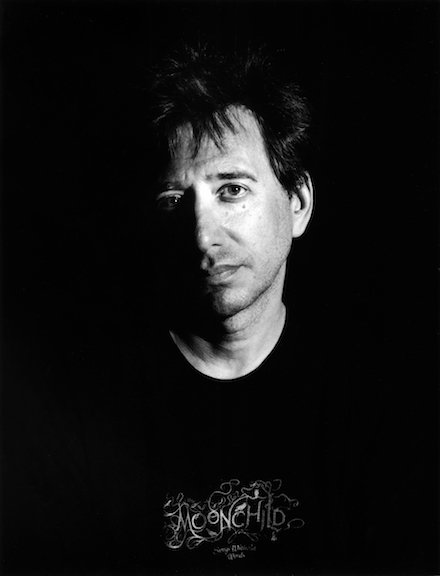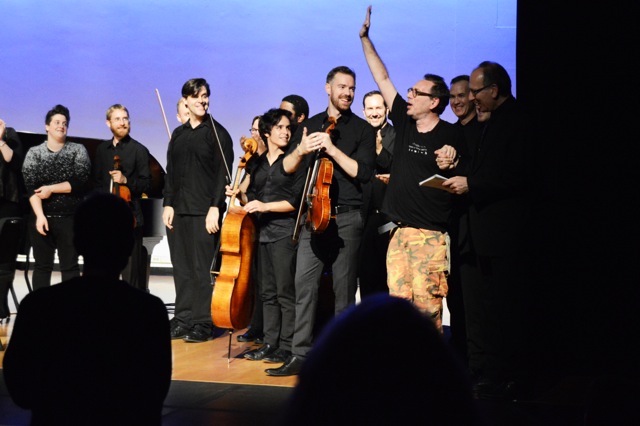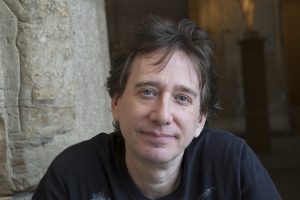Composer Portraits: John Zorn
Miller Theatre at Columbia University
October 20, 2016
by Seth Rogovoy
(NEW YORK, N.Y.) – In the program notes for the powerful and stunning concert of new works, including five world premieres, presented at the Miller Theatre on Thursday night, composer John Zorn writes of a few of them: “These pieces still carry all the intensity, mysticism, lyricism and wit of my earlier work, but in more nuanced, subtle proportions – perhaps more poem than spell or manifesto.” There’s no point in trying to come up with a better overall summary of the evening’s impact – Zorn, as is typical, nails it best, and the only emendation I would make is that this description could easily refer to all the magnificent works on display and performed by a veritable all-star lineup of new-music virtuosos.
The first piece on the program, “Freud,” one of the world premieres, set the tone for the evening. In classic Zorn form, it opens with a burst of frenzied, almost chaotic sound (but always a precisely controlled chaos), before pausing to take its own measure and proceeding with a thematic statement. In this case, the trio work, performed by violinist Christopher Otto and cellists Jay Campbell and Michael Nicholas, was, as its title suggests, an exploration of a tripartite mind, with explosions of ferocious musical id that get tamped down by a superego into passages of quiet delicacy, before the ego takes over and pleases with a high-pitched violin riff. Bubbling underneath, however, is the ominous, instinct-fueled sounds of the cellos, which bring about a return of the repressed in the form of a variety of string and bowing techniques – including double-bowing and whipping the air with bows – that stretch the capabilities of the instruments (and the musicians) to their limits.
Next up was the innovative and versatile Talea Ensemble performing “Il n’y a plus de firmament” from 2014, which introduced another great wonder of the evening – the way Zorn works as much on a meta level as a micro level, by which I mean composing for and employing a great diversity of instrumental strategies and tones, which as much as the notes they play (the micro) determine the overall aesthetic and emotion of a piece (as well as just keeping things interesting). With woodwinds, reeds, and one horn, the piece was very much about textures, contrasting the bright, almost brash sound of an oboe against the smooth, muted tones of a bassoon, in conversation with clarinet, flute, and horn. Rich, full harmonies created by these unique-sounding instruments wove a gorgeous tapestry, with reference to cartoon and film music. To these ears, the composition seemed to imagine a more sophisticated version of the theme to “Close Encounters of the Third Kind,” in this case, however, with the aliens having been raised watching Looney Tunes rather than being channeled through the insipid (albeit catchy) voice of John Williams.
“Diableries,” a new trio piece featuring Jay Campbell on cello and the amazing Tyshawn Sorey on drums, was the most “jazzy” of the composed pieces heard all evening – almost a free-jazz number tightly controlled by the composer yet relying on the musicians to lift it into the stratosphere – or to the underworld, as the case may be and as the title hints at.
The American Brass Quintet offered a brilliant premiere of “Blue Stratagem,” again introducing an entirely new tonality to the evening as a whole (this was an astutely programmed evening – Zorn doesn’t miss a trick nor overlook an opportunity to engage his listeners on any and every level, even when he may be toying with them or purposefully trying to challenge or alienate them). By this point in the concert Zorn had provided new and old hands a key to unlocking his musical grammar and vocabulary, while at the same time not making things easy for the musicians, who in this case were challenged with frequent mute changes, sometimes several within one passage (as Zorn himself wrote, “perhaps more than in any piece ever written!”), on their way to creating a bi-level construction of background and foreground, much like the Agnes Martin paintings (currently on view at the Guggenheim) that Zorn says inspired the work.
Violist David Fulmer wrestled a five-and-a-half minute solo called “Cagliostro” to the ground with not just one but two bows positioned above and below the strings and fastened together at the tip so that the sustain wrought a nonstop wall of sound for the entirety of the piece, a work of demonic frenzy, appropriately named for an 18th-century mystic and charlatan.
“Candlemas Eve,” another premiere set on the Talea Ensemble, featured flutists Tara Helen O’Connor and Isabel Gleicher creating an entirely new set of sounds in combination with a vibraharp played by Alex Lipowski and manipulated by Sae Hashimoto, who changed the speed of the vibrato. Again, the piece was more about the overall sonority created by this odd blend of instruments, which conjured up a “Twin Peaks”-like realm.
The evening concluded with another premiere, “Obscure Objects of Desire,” performed by JACK Quartet with pianist Stephen Gosling, inspired by the surreal cinema of the late Luis Bunuel.
Halfway through the evening, I couldn’t help wondering: where is John Zorn’s Pulitzer Prize for Composition? Hell, where is his Nobel Prize for … Being John Zorn?
Seth Rogovoy is the author of “Bob Dylan: Prophet Mystic Poet” (Scribner, 2009). He is a recipient of a 2016 Simon Rockower Award from the American Jewish Press Association for excellence in arts and criticism.



